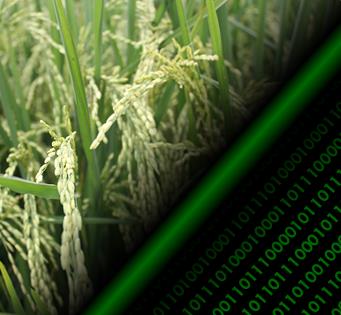Impact of agro-management practices on rice elongation: analysis and modelling.
 |
2014 - Crop Science, 54, 2294-2302 |
 |
Confalonieri, R., Stella, T., Dominoni, P., Frasso, N., Consolati, G., Bertoglio, M., Bianchi, E., Bortone, L., Cairo, V., Cappelli, G., Cozzaglio, G., Fattorossi, G., Garbelli, A., D'Incecco, P., Marazzi, A., Marescotti, M.E., Marziali, F., Maserati, S., Mazza, M., Mottadelli, G., Negrini, G., Nutini, F., Orasen, G., Pacca, L., Pinnetti, M., Pirotta, M., Porta, R., Riva, A., Scaramelli, A., Sessa |
Abstract:
Plant height has a deep influence on the productivity of many crops, as it involves susceptibility to lodging, crop–weed competition, and the achievement of favorable harvest index. Nevertheless, modellers have practically ignored related ecophysiological processes, especially those modulated by management practices. The aim of this study was to analyze and model the processes involved with the effects of management on rice (Oryza sativa L.) elongation. Data were collected in two greenhouse experiments (2010–2011) where three factors (floodwater level, N fertilization, sowing density) were arranged in a split-plot design with three replicates. The model proposed demonstrated its suitability in reproducing both the dynamics involved with tissue elongation in the different phenological phases and the effects of submergence
and N luxury consumption on elongation rates. Relative root mean square error (RRMSE) ranged between 4.23 and 12.41% for different
treatments and years. The inclusion of algorithms for the impact of agronomic practices on plant height in cropping system models would
increase their suitability for scenario analyses and for in silico ideotyping studies, owing to the great interest shown by geneticists in related
traits. Moreover, this study—performed with students of a Cropping Systems MS course—demonstrated once more the power of modeling within educational activities. In this case, models were not the subject of the teaching but tools for analyzing processes and formalizing new knowledge.
and N luxury consumption on elongation rates. Relative root mean square error (RRMSE) ranged between 4.23 and 12.41% for different
treatments and years. The inclusion of algorithms for the impact of agronomic practices on plant height in cropping system models would
increase their suitability for scenario analyses and for in silico ideotyping studies, owing to the great interest shown by geneticists in related
traits. Moreover, this study—performed with students of a Cropping Systems MS course—demonstrated once more the power of modeling within educational activities. In this case, models were not the subject of the teaching but tools for analyzing processes and formalizing new knowledge.
 |
Keywords: no keywords |
 |
DOI: 10.2135/cropsci2014.02.0116 |
- Comparison of three calibration methods for modeling rice phenology
- A simple pipeline for the assessment of legacy soil datasets: An example and test with soil organic carbon from a highly variable area.
- A high-resolution, integrated system for rice yield forecasting at district level.
- Downscaling rice yield simulation at sub-field scale using remotely sensed LAI data.
- Analysis and modelling of processes involved with salt tolerance and rice.
- Estimating crop nutritional status using smart apps to support nitrogen fertilization. A case study on paddy rice.
- Development of generic crop models for simulation of multi-species plant communities in mown grasslands.
- Quantifying uncertainty due to stochastic weather generators in climate change impact studies
- Predicting rice blast disease: machine learning versus process-based models
- Boundaries and perspectives from a multi-model study on rice grain quality in Northern Italy.




